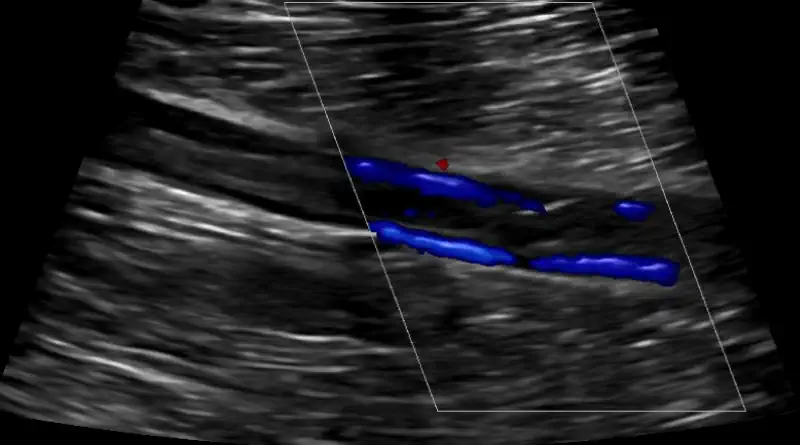Deep Vein Thrombosis
A deep vein thrombosis is a blood clot in a vein. We also call it a DVT. The most common location for a deep vein thrombosis is in a leg vein. So, some people use the term “blood clots in legs“. But these clots can happen in other locations. This article will focus on clots in the leg veins. Other articles will discuss clots in the arm veins and clots in unusual locations.
Symptoms
The most common DVT symptoms are swelling and pain. If you develop a sudden swollen calf or thigh without any other explanation you should think about a blood clot. But sometimes a patient will have a DVT but will not have any symptoms. Other times, the clot will embolize (move) to the lungs. Then it becomes a pulmonary embolism. If that happens a patient will experience symptoms like chest pain and shortness of breath.
What Else can it be?
A swollen calf or even a swollen thigh is not always a blood clot. There are other reasons for a swollen painful leg. For instance, a ruptured Baker’s cyst will cause swelling and pain in the calf. Still, it is better to assume that the symptoms are from a clot, than to ignore them. Missing a blood clot can lead to poor outcomes.
Chronic Symptoms
Most people who had a deep vein thrombosis will not suffer from long-term symptoms. But some people will develop chronic symptoms. These chronic symptoms after a DVT are called post thrombotic syndrome. The symptoms of post thrombotic syndrome include chronic pain, swelling and skin changes. Some people will even develop chronic wounds.
Deep Vein Thrombosis Diagnosis
One we suspect a deep vein thrombosis we need to confirm the diagnosis. The best way to do this is with a simple ultrasound examination. Ultrasound uses sound waves. It does not include needles or dye.

Treatment
The most important treatment for a deep vein thrombosis is with blood thinners. We need to start blood thinners quickly because delaying treatment will result in worse outcomes. This means that if we delay treatment some of the clot might break off and go to the lungs. This is called pulmonary embolism. Delaying treatment might also result in the clot growing or in a higher likelihood of developing post thrombotic syndrome.
Procedures for Deep Vein Thrombosis
Sometimes, it is possible to remove clot from the leg veins. There are three main tools that we can use:
- Clot busting medications. The professional name for these medications is lytic agents.
- Sucking the clot out. We call this thrombectomy.
- Tools to break the clot. We will never just break up the clot, because then it will definitely go upstream to the lungs. But we might decide to break the clot up before we melt it with lytics or before we suck it out with thrombectomy.
There are two reasons to offer a procedure for deep vein thrombosis:
- Severe immediate symptoms. If someone is in much pain or if they have a very swollen leg we might offer treatment. Rarely a clot will cause leg swelling that is so severe it will block artery flow to the leg. This is an urgent and dangerous situation. We call it phlegmasia. Phlegmasia is an urgent reason to perform a procedure for a DVT.
- Preventing post thrombotic syndrome. In theory, if we open up the vein that has a clot in it, we will allow better blood flow through that vein. And in theory improving blood flow will reduce the change of chronic symptoms. But while this all makes sense; it does not work as well as we might have expected. In reality, deciding who to treat is not easy.



